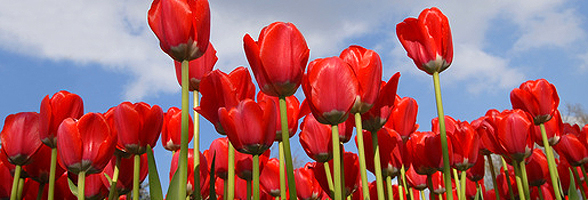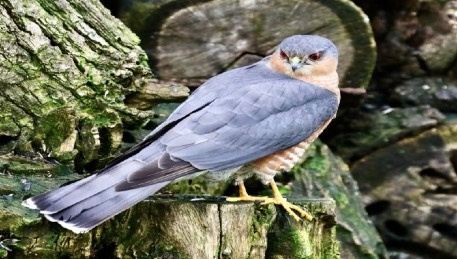
BIRDS AND BUTTERFLIES
The Merlin Falcon
By Karin Bolcshazy


Last year, I spotted a visitor to my backyard with beautiful blue-gray plumage. Suddenly, the usual suspects at my bird feeders had disappeared, and, you know, when that happens, something's up! The mysterious bird appeared a couple of days in a row, and then was gone not to be seen again.
I am pretty sure it was a male Merlin. The Merlin is a small falcon (bigger than a Robbin, smaller than a crow), once known as the "Pigeon Hawk", because it somewhat resembles a pigeon in flight. They also look like the American kestrel. (Renowned ornithologists Pete Dunne, David Sibley, and Clay Sutton wrote that "the Merlin is to an American Kestrel what a Harley-Davidson motorcycle is to a bicycle.") The Merlin (Falcon columbarius) has had a long relationship with humans. Falconry was a cherished pastime of the medieval European aristocracy. The Merlin was considered the perfect bird for a lady; at about a foot long and no more than half a pound in weight, it would certainly have made a handsome, portable accessory for a fashion-conscious noblewoman. Catherine, the Great and Mary, Queen of Scots flew Merlins for sport.
The male Merlin has a blue-grey back, ranging from almost black to silver-grey in different subspecies. Its underparts are buff- to orange-tinted and streaked with black to reddish brown. The female and immature are brownish-grey to dark brown above, and whitish buff spotted with brown below.
Merlins' habitat varies from coniferous forest in the north and northwest coast to isolated deciduous groves and suburban yards. Because they migrate seasonally, Merlins have an exceptionally large range. During the spring and summer, they live in northern regions, and during the winter they migrate south.
Merlins rely on speed and agility to hunt their prey. They often hunt by flying fast and low, typically less than 3.3 ft above the ground, using trees and large shrubs to take prey by surprise. They actually capture most prey in the air. Their diet is about 90 percent birds, as well as insects, small mammals, lizards, and snakes.
Breeding occurs typically in May/June. They usurp the nests of other large birds. 4 or 5 eggs are laid; incubation period is 28 to 32 days. The young fledglings are dependent on their parents for up to 4 more weeks. More than half the eggs survive to hatching, and at least two-thirds of the hatched young fledge.
Fingerlakes Trust; American Bird Conservancy; The Cornell Lab of Ornithology; Wikipedia